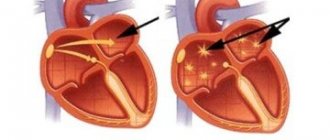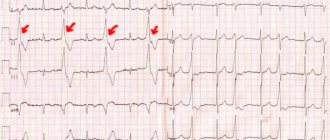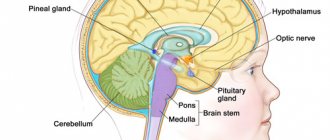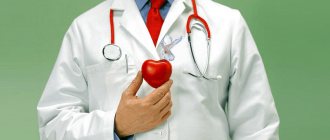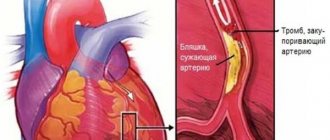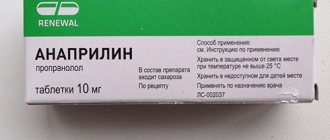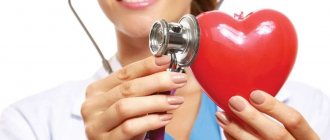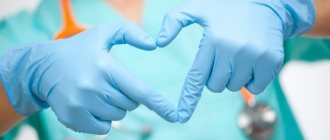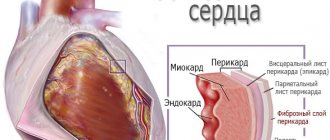During cardiac arrhythmia, there is a failure in the coherence of contractions of myocardial fibers. The disease is considered one of the most common and causes a variety of pathologies, especially the respiratory and cardiovascular systems.
Paroxysmal fibrillation is the most common form of atrial contraction pathology. There is a stoppage of the sinus node and a chaotic contraction of atrial myocytes with a frequency of 300-800 beats per minute. In fact, only two heart chambers are functional and perform their functions properly. And the rest only lead to failures, negatively affecting blood circulation.
Concept and form of paroxysmal AF
The norm is taken to be a heartbeat of 70 times per minute, which is due to the continuous connection of the organ with the sinus node. During fibrillation, other cells in the atrium take over responsibility for contraction.
Due to its duration, fibrillation has the following forms:
- The paroxysmal form of AF is characterized by the appearance of unexpected arrhythmia. In this case, the attack can last from a couple of minutes to a whole week. How quickly the seizure stops depends on the quality and correctness of first aid. Practice shows that normalization of heart rate occurs within 24 hours. But there are cases when the rhythm returns to normal on its own, without outside help.
- The persistent form of AF is characterized by a longer duration of the attack, which ranges from a week to six months. Treatment of the disease with medications or appropriate therapy. When an attack lasts more than six months, surgical intervention is recommended.
- permanent form of AF alternating normal heart rate and arrhythmia. Moreover, the latter can last about a year. In this case, it is not worth resorting to surgical intervention: the desired effect will not be obtained, since this form is chronic. You can maintain a normal condition with the help of medications and constant examination by a specialist.
With age, the tendency to paroxysmal AF is higher.
Some healthcare providers distinguish between atrial fibrillation and atrial flutter. Whereas the combination of these concepts is called atrial fibrillation.
Causes
Paroxysmal atrial fibrillation occurs when abnormal electrical pathways develop in the myocardium. As a result, the heart begins to beat irregularly or fails to pump enough oxygenated blood throughout the body.
Paroxysmal AF can be caused by poor lifestyle habits, especially illicit drug use, smoking, alcohol, obesity and overexertion. In some cases, the disease may be associated with pre-existing or concomitant diseases, such as:
- Previous heart attack or heart surgery.
- Heart diseases, especially those associated with scarring and changes in the structure of the myocardium.
- Diabetes.
- Sleep apnea (stopping breathing).
- High blood pressure.
- Lung diseases.
- Hyperglycemia
Poor lifestyle choices can also lead to paroxysmal AF, for example:
- Smoking (even if passive).
- Use of other stimulants such as caffeine and certain medications
- Overweight or obese.
- Stress.
- Bad dream.
- Prolonged physical activity.
- Excessive alcohol consumption.
The occurrence of PFP in the context of alcohol intake is sometimes called “cardiac holiday syndrome” because the pathology is often first detected after weekends or holidays, when many people drink large amounts of alcoholic beverages.
Exercise and training are generally considered to have health benefits. However, people with PFP should consult their doctor before starting a new workout or increasing the intensity of exercise. In some cases, increasing physical activity can also lead to PAF due to the stress it places on the heart.
Classification of pathology
Fibrillation has two forms:
- Flicker. Heart rate is more than 300 beats per minute, but not all myocardial fibers contract.
- Flutter. Heart rate does not exceed 300 beats in 60 seconds, the sinus node is completely “resting”.
There is recurrent paroxysm. Its characteristic symptom is periodic occurrence. Features of the pathology:
- rare, short-term illnesses that do not cause discomfort,
- frequent attacks causing oxygen starvation in the ventricles.
Another classification of fibrillation is based on the ventricular contraction factor. Highlight:
- Tachysystolic. The ventricles contract up to 100 times a minute. The patient experiences shortness of breath, shortness of breath, and chest pain.
- Normosystolic. The number of contractions varies between 60-100.
- Bradysystolic. The ventricles contract no more than 60 times.
Classification of AF by duration
Cardiologists still do not have a consensus on which form of atrial fibrillation poses the greatest danger or, on the contrary, has the best prognosis. Let us consider each of the forms in the classification of atrial fibrillation in more detail.
Paroxysmal atrial fibrillation
The paroxysmal form of MA, or AF, is characterized by frequent, paroxysmal (up to an innumerable number of times a day) occurrence and independent disappearance of “flickering” contractions. During the intervals between paroxysms, the patient's heart works normally.
The patient’s reaction to attacks of AF can be radically opposite - the arrhythmia can go completely unnoticed or, on the contrary, cause quite severe conditions that significantly impair a person’s quality of life.
Persistent (persistent) atrial fibrillation
With persistent fibrillation, the arrhythmia lasts more than a week or does not resolve on its own for a long time, requiring medication to restore the rhythm. The patient's condition with this form of rhythm disturbance can be corrected not only with medication, but also through the use of electrical pulse therapy.
As can be understood from the name, permanent (or constant) arrhythmia is characterized by a constant flow and cannot be eliminated by medications and other methods known today. Failure to restore sinus rhythm becomes the reason for diagnosing permanent AF.
Classification of AF proposed by the European Society of Cardiology
According to the latest classification of atrial fibrillation, supported by the All-Russian Scientific Society of Cardiology, there is another form of atrial fibrillation - isolated. It designates a type of fibrillation in individuals with a negligible risk of thromboembolism and without structural heart disease. This term is usually used to describe arrhythmia in patients under the age of 60 years.
In addition, in 2010, the European Society of Cardiology (EHRA) proposed a clinical classification of atrial fibrillation based on the symptomatic severity of the disease. According to this classification, 4 forms are distinguished - from the asymptomatic mild form I to the disabling form IV.
AF: causes of occurrence
Heart rhythm disturbances during paroxysmal atrial fibrillation are accompanied by physiological abnormalities in the patient’s body, which serve as the cause of the disease in the future:
- functional disorders that developed after suffering inflammation,
- cardiac ischemia,
- pathological abnormalities, including defects that arose during life and caused an increase in the chambers of the heart,
- hypertension in chronic form, which leads to an increase in myocardial mass,
- hereditary cardiomeopathy.
There are a number of reasons that cause paroxysmal atrial flutter, provoked by non-cardiac factors:
- alcohol abuse,
- lack of potassium and magnesium in the body,
- changes in the heart muscle that have formed as a result of lung disease,
- serious infectious diseases,
- excessive use of adrenergic agonists and cardiac glycosides, including their use on a regular basis,
- problems with the nervous system, overexertion, stress, emotional exhaustion,
- hormonal imbalances,
- health difficulties after surgery.
Important! Sometimes circumstances are such that it is unrealistic to identify paroxysmal AF, or more precisely, the main cause of the disease. This applies to young people and teenagers.
Diagnostics
If you experience any of these symptoms, you should contact your doctor as soon as possible. Even if the symptoms disappear, a physical examination of the patient should be carried out followed by monitoring of the heart.
Sometimes there are no signs of illness. In such cases, the doctor will be able to diagnose the problem using additional diagnostic methods such as ECG or echoCG.
Electrocardiography (ECG) is a simple and painless test that involves having sensors attached to the skin on your arms, legs, and chest. Sensors detect electrical signals coming from the beating heart. The result of the study is transmitted to the monitor and then the doctor determines the existing problems in cardiac activity. An ECG test usually takes only a few minutes.
Echocardiography (echoCG) uses sound waves to create a digital image of the heart. Shows various structural changes of the heart, valve defects are especially well diagnosed.
Chest X-ray (CH X-ray) - performed to look for signs of cardiovascular diseases, in particular, the contours of the heart and its transverse size may change.
Blood tests used to look for signs of other diseases that may cause atrial fibrillation
Stress test , with which doctors check the functioning of the heart before and after performing physical exercise (on a treadmill, on a bicycle).
Holter monitoring uses a wearable device that measures and records heart activity over a period of one to two days.
An event monitor is a portable ECG that measures heart activity over a period of weeks or months.
Transesophageal echocardiography
(PE echocardiography) is the most sensitive and specific method for detecting thrombi in the pulmonary artery, which are a potential source of systemic embolism in AF. Can be used to determine the timing of cardioversion or performed before catheter ablation. It also identifies features associated with an increased risk of pulmonary embolism, including decreased pulmonary artery blood flow velocity, spontaneous vascular contrast, and aortic atheroma. In 5% - 15% of patients with AF, emergency echocardiography can detect pulmonary embolism or pulmonary artery thrombus even at the stage of planning cardioversion. [2]
Paroxysmal atrial fibrillation: symptoms
Signs of cardiac arrhythmia may vary from patient to patient. Some people experience pain in the heart area. While most patients with arrhythmic fibrillation are characterized by the following symptoms:
- a sudden single attack of palpitations,
- a sharp deterioration in health and weakness,
- lack of fresh air,
- feeling of coldness in the hands and feet,
- extreme sweating
- trembling throughout the body and more.
In some cases, pale areas of the skin and bluish lips are observed.
When the pathology is severe, the symptoms worsen. The following symptoms are observed:
- dizziness to the point of loss of consciousness,
- panic attacks caused by a sharp deterioration in general well-being and its normalization. As a result, the patient does not understand what is happening to him and worries about his own life.
Important! Whatever happens, first of all, do not panic and contact a specialist. Only after an examination (ECG) can you find out the cause of symptoms and health problems.
As soon as the paroxysmal rhythm disturbances, more precisely, seizures, are over, the patient experiences increased intestinal motility. The latter causes profuse urination. When there is a significant decrease in the number of heartbeats, the patient experiences a decrease in blood flow to the brain. Therefore, loss of consciousness occurs, breathing stops and the pulse cannot be felt. In this case, the patient needs urgent resuscitation.
Symptoms
The paroxysmal form of atrial fibrillation has several characteristic signs that reflect the state of deterioration of the blood supply to the brain. The first symptoms to appear are:
- shiver;
- coldness in the extremities;
- general weakness;
- sudden onset of palpitations;
- feeling of suffocation and increased sweating;
- cyanosis - a bluish tint to the lips.
A severe attack may be accompanied by dizziness, fainting and panic attacks. At the same time, the person feels a sharp deterioration in his condition. The attack ends with increased intestinal motility and copious urination. All other signs disappear as soon as sinus rhythm returns to normal. Some patients, on the contrary, may not even notice that they have atrial fibrillation. In asymptomatic cases, the pathology is diagnosed only in a doctor’s office.
Paroxysmal arrhythmia: diagnosing the disease
Electrocardiography is considered the main and main method for diagnosing atrial flutter. After all, only on an ECG can one notice the absence of the P wave in all sections, instead of which random waves appear. At the same time, the intervals between their appearance will also vary in length.
- ventricular paroxysm of atrial fibrillation after a seizure shows ST displacement and a negative wave. The likelihood of a patient having a myocardial infarction increases, which is why monitoring the health status and dynamics of the disease is important.
- when a paroxysmal form of atrial fibrillation is observed at the initial stage, the ECG will record a significant deformation of the R wave.
In addition to ECG, the following can be used for diagnosis:
- Holter monitoring,
- ECG test with exercise,
- listening to the heartbeat with a stethoscope,
- Ultrasound examination of the heart (ECHO-CG). This laboratory test will determine the dimensions of the atria.
- Transesophageal cardiac ultrasound is rarely prescribed due to the lack of equipment in medical institutions. This device will allow you to determine the presence or absence of blood clots in the organ.
What is paroxysmal atrial fibrillation?
In medicine, atrial fibrillation refers to uncoordinated excitation of the atrial myocardium up to 350–700 times per minute without their full contraction. Depending on the specific frequency indicator, the term “atrial fibrillation” refers to two forms of atrial arrhythmias:
- Atrial fibrillation. With it, high-frequency impulses propagate chaotically throughout the myocardium. Only individual fibers contract extremely quickly and uncoordinatedly.
- Atrial flutter. In this case, the heart muscle fibers contract more slowly compared to fibrillation (flicker) - up to 200–400 times per minute. The atria still work, but only a portion of their impulses reach the ventricular myocardium. As a result, they work slower. Hemodynamic disturbances with this type of fibrillation are less significant.
The impulses do not affect all the muscle fibers of the heart, which causes disruption of the functioning of individual heart chambers. This form of rhythm disturbance accounts for 2% of all types of arrhythmias. There are several types of atrial fibrillation:
- newly identified – characterized by the first occurrence in life, regardless of duration and severity;
- paroxysmal (variable) - doctors detect it if disruptions in the heart function last no more than a week;
- persistent - this form does not end spontaneously within a week and requires drug treatment;
- long-term persistent – lasts more than 1 year even with the chosen method of rhythm correction;
- constant - characterized by a chronic course in which attempts to restore the rhythm were unsuccessful.
Attacks of paroxysmal fibrillation often stop within 2 days. When rhythm disturbances persist for more than a week, permanent atrial fibrillation is diagnosed. Paroxysm of atrial fibrillation has a separate code according to ICD-10 - I 48.0. It is considered the initial stage because if left untreated it leads to chronic heart rhythm disturbances.
Paroxysmal atrial fibrillation: treatment
Treatment of paroxysmal AF depends on the length of the attack:
- if the last attack is at least 48 hours ago, then the main task of doctors is to restore sinus rhythm,
- when more time has passed, the likelihood of embolic complications is so high that strong treatment methods must be used. Use anticoagulants that prevent the formation of blood clots by forced blood thinning. And only after a month can we talk about restoring the heartbeat rhythm.
Treatment
If the patient has paroxysmal fibrillation, it is necessary to stop the disease as early as possible. It is advisable to do this in the first 48 hours after the onset of the attack. If fibrillation is permanent, then the necessary measure will be to take prescribed medications to avoid a stroke.
To treat PFPP, you first need to identify and eliminate the cause of its occurrence.
Prevention of the disease:
- It is necessary to find the cause of the arrhythmia and begin its treatment.
- Monitor the amount of magnesium and potassium in the body. Make up for their deficiency. It is advisable to take it in combination, as magnesium helps potassium to be absorbed. Together they are found in the preparations Panangin and Asparkam. Also, a high content of these elements is noted in bananas, dried apricots, raisins, watermelons, and pumpkin.
- Individually selected antiarrhythmic drugs will help prevent treatment.
- Avoid drinking alcohol, caffeine, and nicotine.
- Avoid stress and overload of the body.
- Do physical therapy.
- Don't forget about proper rest.
Drug treatment and therapy of paroxysmal AF
After arrhythmic atrial fibrillation, the question must be resolved: how to treat atrial disease. They resort to restoring the normal functioning of the organ with special medications.
Practice shows that such means are:
- digoxin, which will control your heart rate,
- cordarone, a positive aspect of its use is the minimum of adverse reactions,
- Novocainamide can, when suddenly introduced into the blood, lead to a significant decrease in blood pressure.
Drug treatment is administered intravenously by ambulance or hospital workers. The effectiveness of this method is more than 95%.
During acute attacks of the disease, the doctor may prescribe propanorm to the patient. The drug is available in tablets. Therefore, the patient can take it independently under the supervision of a specialist. Taking medications without a doctor's prescription is prohibited. This can only make things worse.
Complications
Leaving an emerging disease unattended and refusing the prescribed treatment regimen entails the risk of complications of the pathology and the development of concomitant diseases. During atrial fibrillation, blood flow through the heart muscle is uneven. Different segments of the heart receive uneven filling with blood, and congestion occurs.
Atrial fibrillation of any type without support and bringing the heart rhythm back to normal over time develops into the following complicated pathologies:
- pulmonary edema;
- thromboembolism;
- arrhythmia of a chronic type, including persistent;
- arrhythmogenic shock;
- cardiac muscle asthma;
- cardiomyopathy.
When fluid stagnates in the myocardium, a large number of platelets are formed in the blood, which can create a thrombus with attachment in the atrium, aortic vessel, and arteries. Blockage can lead to tissue death and gangrene. Failure to relieve an arrhythmia attack within two days can cause a stroke.
Electropulse therapeutic method for the treatment of paroxysmal AF
If the previous treatment method does not bring results, the attending physician may prescribe an electrical discharge or electropulse therapy:
- To begin with, the patient is placed under anesthesia.
- Two electrodes are connected under the collarbone on the right, in the area of the motor actuator.
- The medical worker switches the device to synchronization mode so that the correspondence between the discharge and contraction of the ventricles is identical.
- The current indicator should be in the range of 100-360 J.
- An electrical shock is delivered.
In this case, the body receives a reboot and the rhythm is restored. This method is almost 100% effective.
Classification
Doctors classify atrial fibrillation into different types. In fact, several confusing classification systems for AF have been used. To help decide which treatment approach is right for you, it is helpful to group the types of AF into just two groups:
- New onset or intermittent atrial fibrillation . Here, arrhythmia is either a new problem or occurs only periodically. Intermittent AF is often called paroxysmal atrial fibrillation. People in this category have normal heart rhythms the vast majority of the time, and their episodes of atrial fibrillation tend to be relatively short and usually infrequent.
- Chronic or persistent atrial fibrillation. Here, the arrhythmia is either present all the time or occurs so frequently that periods of normal heart rhythm are relatively rare or short-lived.
Surgical intervention
If conversion does not occur after using medication and other treatment methods, and the patient increasingly complains of attacks of the disease, then surgical intervention cannot be avoided. During the operation, foci of pathological excitation of the heart muscle are cauterized with a laser. And to heal the artery, a puncture is performed with a special catheter.
Important! Relief of AF paroxysm is carried out by medical workers to interrupt an attack of the disease. The latter bring the frequency of contractions to almost eight hundred units, becoming an automatic function. The generated exciting wave, capturing not the entire atrium, but only certain muscles, ensures frequent contraction of the fibers.
Reasons for the development of pathology
Factors in the development of the process are always pathogenic. It cannot be of natural origin. Probable diagnoses:
Mitral valve stenosis
Congenital or more often acquired phenomenon. Heart disease. It is formed as a result of extensive myocardial infarction and inflammation of cardiac structures.
Normally, the anatomical formation is a hole of 4 to 7 centimeters, ensuring adequate penetration of blood and its release. With fusion or stenosis, the window narrows and failure of the organ occurs.
Symptoms increase as the process moves forward. In the later stages, treatment is basically impossible; care is palliative, aimed at ensuring a minimally acceptable standard of living, up to and including death. Causes a permanent form of atrial fibrillation. In the early stages, seizures are possible. Determinism - 35%.
Consequence of surgery
Radical treatment itself poses a danger to the life and health of patients.
Arrhythmias of this kind affect the state of the muscular organ by provoking artificial temporary insufficiency. Therefore, operated patients are monitored especially carefully. At least 7-14 days. Perhaps more, given the unfavorable course of the rehabilitation period.
The result of therapy is a paroxysmal form of atrial fibrillation. The attacks last several minutes, but can result in a stoppage of work.
Arterial hypertension
In itself, it causes disturbances in the activity of the muscular organ. Especially against the backdrop of a long course. The degree plays a minor role, but also increases the likelihood of arrhythmia.
More often it manifests itself in the form of short-term tachysystole. It goes away without drugs. Hypertensive patients with experience are at greater risk of dying due to complications.
Cardiac ischemia
Insufficient nutrition of the myocardium. In 100% of cases it ends in a heart attack. It is the matter of time. Alarming warning signs are arrhythmias of the flutter type (fibrillation).
Cardiomyopathy
Congenital and acquired malformations of the heart and its structures. Potentially fatal. They provoke a complex of symptoms in the later stages. In the early stages, until the onset of a fatal state, they may not manifest themselves in any way.
Further distinguished:
- Lipid metabolism disorders. Obesity is just a consequence, a sign that prompts thoughts about the origin of the pathology. The result of atherosclerosis of the large arteries of the body.
- Diseases of the adrenal glands, accompanied by excess or deficiency of cortisol and other hormones. It usually results from pheochromocytoma or cancer. Less commonly caused by pituitary insufficiency.
- Diabetes. Generalized pathology. Accompanied by a lot of manifestations. Latent forms can last for years without obvious symptoms.
- Excessive production of thyroid hormones. Thyrotoxicosis.
A certain increase in risk is observed in patients who smoke and those suffering from alcoholism (the dose of alcohol per day should not exceed 40 ml).
In the absence of evidence for organic lesions, they speak of an idiopathic type of arrhythmia. It involves long-term treatment without the possibility of eliminating the root cause.
Diet
Dietary nutrition for PF is mandatory. The diet should be based on foods enriched with potassium, magnesium and calcium. These substances are found in:
- bran and grain bread,
- buckwheat,
- green beans,
- pumpkin and sunflower seeds,
- wheat bran,
- cocoa,
- wheat and soy sprouts,
- red rice,
- oats and oatmeal,
- potatoes,
- bananas,
- cilantro,
- hard cheese,
- homemade fat cottage cheese,
- nuts,
- fish fillet,
- fermented milk products,
- vegetable oil.
The patient should not eat:
- sweets,
- homemade sour cream,
- scrambled eggs
- spicy dishes,
- canned food,
- fat meat,
- chocolate,
- rich meat broths,
- salo.
The consumption of alcoholic beverages and energy drinks is prohibited. Table salt and sugar can be used in minimal quantities.
Surgical methods
If medication and electrical pulse methods do not give the desired result, or the disease tends to recur frequently, surgical intervention is performed - an extreme and rather complex method. It involves removing pathological lesions with a laser.
There are several types of operation:
- Opening the chest is a traditional method that has been used by many doctors for decades. Requires a long recovery period;
- Without opening the chest - the operation is carried out through a puncture, and is done with the availability of modern equipment in all cardiology centers. The most progressive and safe type of intervention;
- Installation of a cardioverter - the device does not work constantly, but turns on only when the heart malfunctions. This operation is quite expensive, prices start from 2 thousand dollars.
Surgical treatment is used only if other methods have failed, or the disease progresses and provokes the development of complications in other organs.
Paroxysmal atrial fibrillation is a dangerous pathology that can lead to serious consequences. Fortunately, today this disease is quickly diagnosed and successfully treated, but the insidiousness also lies in the fact that for the patient, disorders can occur without symptoms.
That is, the pathology develops, but timely treatment is not prescribed, so it is worth visiting a doctor regularly and doing an ECG to notice abnormalities in the early stages.
Preventive actions
Measures to prevent heart disease and arterial hypertension:
- avoid abuse of alcoholic beverages, and it is best not to take,
- do not do serious physical activity. But walking in the fresh air at a leisurely pace is beneficial.
- Eliminate fatty and salty foods from your diet. It's better to eat more fresh vegetables and fruits.
- As a preventive measure, the attending physician may prescribe medications, for example: sulfate or aspartate.
Relapse Prevention
With a healthy lifestyle, including a balanced diet, regular sports activities, and timely treatment of pathologies of the cardiovascular system, the progression of attacks of atrial fibrillation can be avoided.
Effective prevention against the occurrence of cardiac arrhythmia is:
- refusal of caffeine, alcohol, nicotine-containing products (strong coffee, including instant coffee, energy drinks, alcoholic drinks, tobacco products);
- reducing stress levels:
- introduction to the daily rest schedule;
- taking medications regularly;
- full sleep of at least 8 hours.
When creating an exercise and nutrition plan, consult with your supervising physician. It is important to find out what exercises you are allowed to do, what intensity of cardio activity is permissible, micronutrient intake standards, and caloric intake.
Tell your loved ones about first aid if an attack of atrial fibrillation occurs. If the symptoms are severe, the patient must be given a sedative (Valocardin, Corvalol), call emergency help, lay him down on a horizontal surface, unbutton his clothes, free the neck area, give access to fresh air, and meet with doctors.
Treatment for PFFP
When an attack of atrial fibrillation occurs, the reason why it happened is determined and, if possible, eliminated. If AF appeared for the first time and went away on its own, the patient is given recommendations regarding the prevention of subsequent attacks.
With repeated paroxysms of atrial fibrillation, treatment changes. The doctor has to choose: restore normal heart rhythm or achieve stabilization of the heart rate while maintaining the arrhythmia. Even when choosing the second option, the chances of survival are significantly increased by reducing the incidence of thromboembolism.
Important! Treatment tactics for paroxysmal atrial fibrillation are selected for each patient separately, taking into account the causes of the pathology, age, and concomitant pathologies.
Drug treatment
Regardless of which option is chosen, prevention of blood clots in the atria is always carried out. For this purpose the following is prescribed:
- Indirect anticoagulants: Pradaxa, Warfarin, Xarelton, Fraxiparine and similar drugs.
- Antiplatelet agents: Dipyridamole, Acetylsalicylic acid, its analogues.
- Low molecular weight heparins: Enoxaparin, Nandroparin and others.
Drugs of these groups, when used for a long time, can cause bleeding, so during use it is necessary to monitor the blood coagulation system.
In cases where the chosen tactic is to preserve the arrhythmia, but reduce the heart rate, the following groups of drugs are prescribed:
| Pharmacological group | Action | Drugs |
| Beta blockers | Reducing the frequency and strength of heart contractions is achieved by reducing the effect of adrenaline on beta-adrenergic receptors. | Cordaron Anaprilin Bisoprolol Betoprolol |
| Cardiac glycosides | Reduces the need for oxygen in the heart muscle. | Digoxin Strophanthin Korglykon |
| Calcium antagonists | Under the influence of drugs, the process of penetration through the channels of this electrolyte slows down, and vasodilation occurs. | Verapamil Diltiazem |
| Preparations based on magnesium and potassium | They increase the stress resistance of heart cells and inhibit neuromuscular transmission. | Magnerot |
| Metabolites | Prevents the development of myocardial ischemia and improves metabolic processes in the heart. | Preductal Riboxin Mildronate Cocarboxylase Asparkam |
To prevent recurrent attacks, the doctor may prescribe long-term use of antiarrhythmic drugs: Dronedarone, Propafenone, Sotalol, Allapinin, Etatsizin, Amiodarone, Moratsizin. It must be taken into account that these drugs have low effectiveness and a high risk of side effects.
Surgery
Radiofrequency destruction is carried out to remove the foci in which arrhythmia occurs. It involves the insertion of a catheter conducting an electrical current into the pathological area of the heart. The main methods of ablation:
- Without opening the chest. The operation involves inserting a catheter through the femoral or carotid artery to the heart, where the area of arrhythmia is eliminated using current.
- With an opening of the chest. A more effective method, but requiring a long recovery period.
- With installation of a cardioverter. During the operation, a special device is installed, the action of which is aimed at eliminating an attack of arrhythmia during its occurrence.
Surgical intervention is indicated in the absence of effect from drug and electrical pulse treatment, as well as in the case of recurrent PFPP.
Cardioversion
Antiarrhythmic drugs or electric current help restore rhythm. In the first case we are talking about pharmacological, in the second – electrical cardioversion.
Pharmacological
If atrial fibrillation occurs for the first time or the paroxysm occurs with tachycardia, resulting in instability of hemodynamic parameters and negative symptoms, pharmacological cardioversion is prescribed. If the probability of maintaining sinus rhythm in the future is not too high, it is better not to use the technique.
Cardioversion of this type is carried out with the following drugs:
- Procainamide (Novocainomide). When administered intravenously by drip or stream, it allows you to quickly restore the heart rhythm, but is notorious for many side effects. Its use can cause changes in the leukocyte formula, dizziness, hallucinations, and hypotension.
- Propaphenone. It is administered by injection or in tablets. Contraindicated in persistent AF, atrial flutter, COPD, coronary heart disease, and decreased left ventricular contractility.
- Amiodarone. Used as injections into a vein, it is indicated for patients with organic lesions of the heart muscles.
- Nibentan. Due to the fact that the drug can cause severe ventricular arrhythmias, it is administered only under supervision in intensive care units. The patient is observed for 24 hours after the infusion of the drug.
Important! If pharmacological cardioversion was started no later than two days from the onset of the paroxysmal attack, the effect of treatment will be maximum.
Electric
The essence of electropulse therapy is the impact of a defibrillator on the heart muscles in order to stimulate the myocardium. After this type of cardioversion, the functions of the sinus node are restored. The method, compared to pharmacological effects, is much more effective, but is more painful, therefore it is carried out under general anesthesia or under the cover of sedatives.
The patient is exposed to a cardioverter-defibrillator, which sends an electrical impulse synchronized with the R wave to the heart. Most often, the method is performed through the skin, but if indicated, intracardiac cardioversion is possible.
There are planned and urgent defibrillation. The first is indicated for arrhythmia lasting more than 48 hours or of unknown duration, but without hemodynamic impairment. In this case, 3 weeks before and a month after, the patient is prescribed Warfarin under the control of INR and IPT.
Urgent electrocardioversion is performed in case of rhythm disturbance lasting less than two days, but accompanied by serious circulatory disorders. Heparin or its low molecular weight analogues are used here.
How does the disease manifest?
The paroxysmal form of atrial fibrillation can occur without symptoms for a person, or they will be practically invisible, so the patient will not give any significance to the disturbances. The severity of the manifestations also depends on how often the atria contract and impulses enter the heart. The following symptoms are traditionally noted:
- Heartbeat increases for no apparent reason;
- There are noticeable interruptions in the work of the heart - the frequency of contractions is not constant;
- The pulse is uneven, which can be noticed by simply palpating at home;
- Shortness of breath appears even with minimal or no exertion;
- A person does not have enough air, he cannot breathe deeply, especially in a horizontal position;
- Pain in the heart area;
- Weakness, general loss of strength and dizziness, even loss of consciousness is possible;
- Increased sweating;
- Feeling of unreasonable fear.
In fact, such signs may indicate a host of other disturbances in the functioning of the heart, so it is impossible to determine at home that a person actually has a paroxysm of atrial fibrillation. This should only be done by a cardiologist based on diagnostic procedures.
